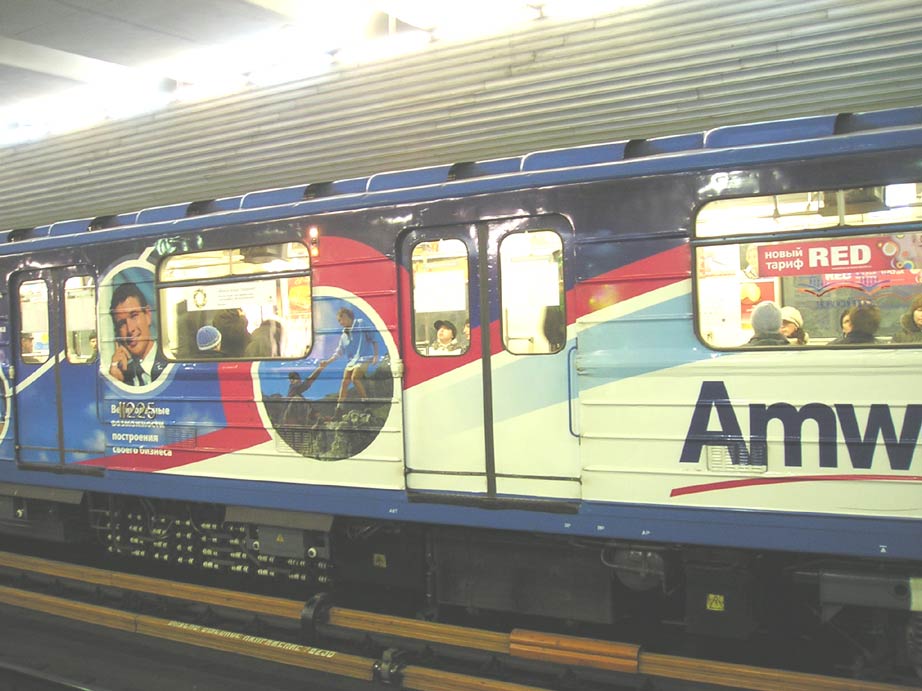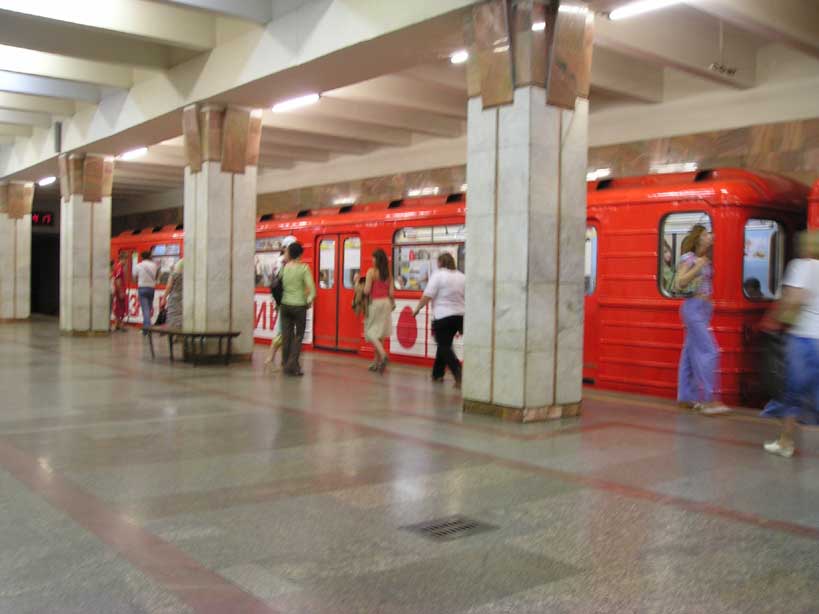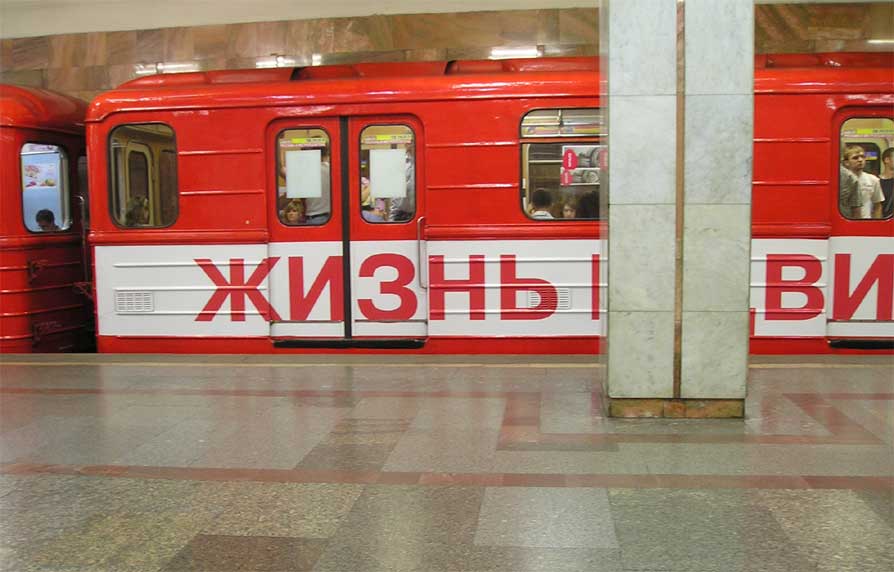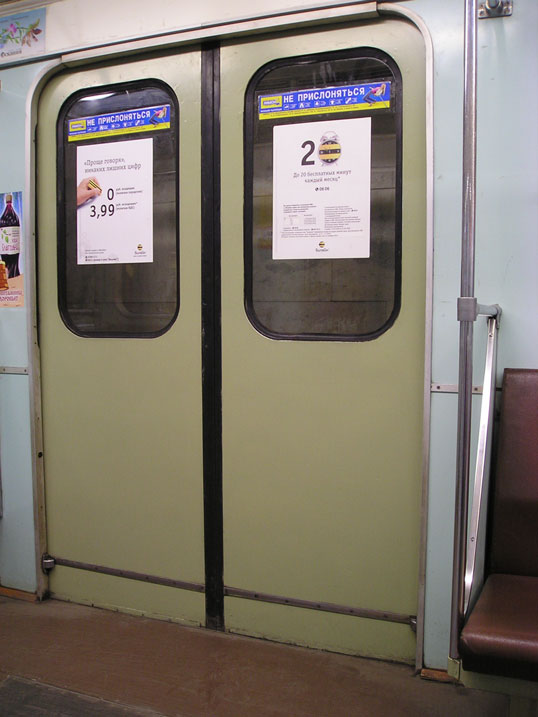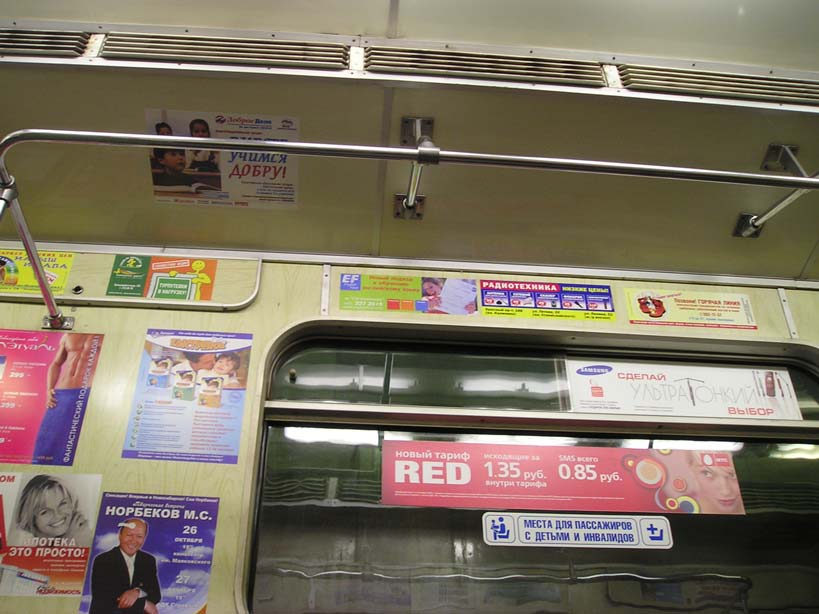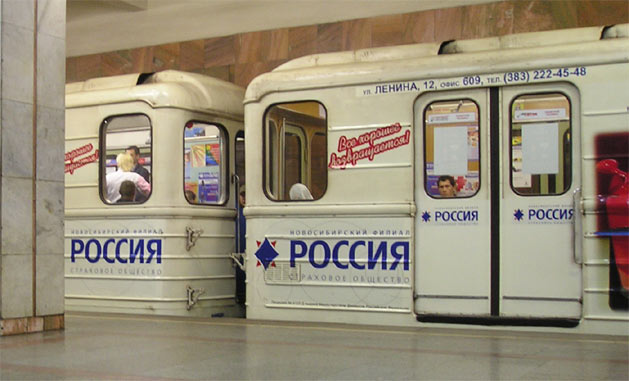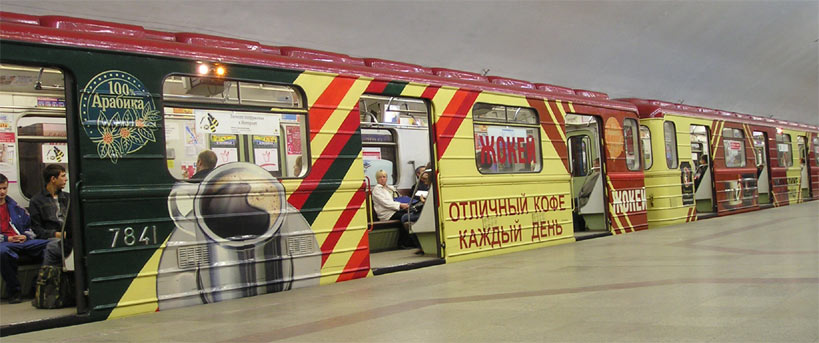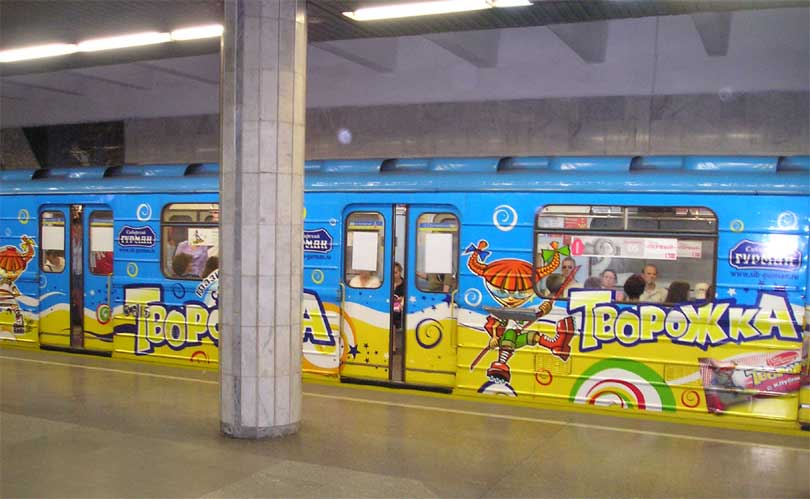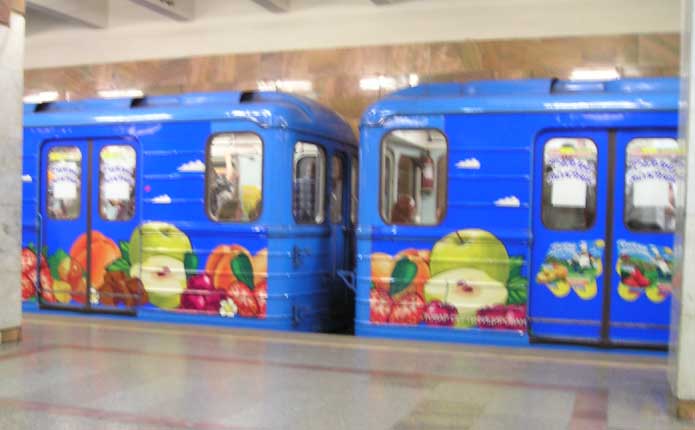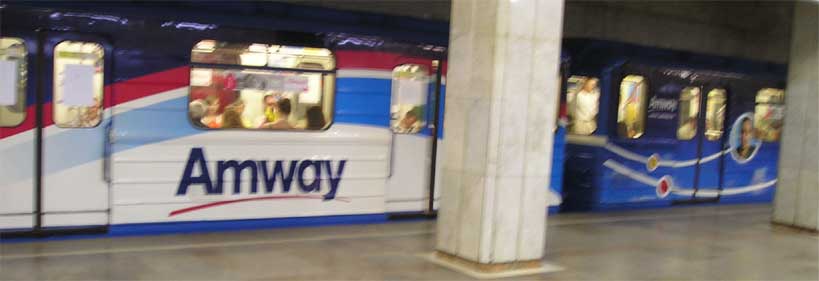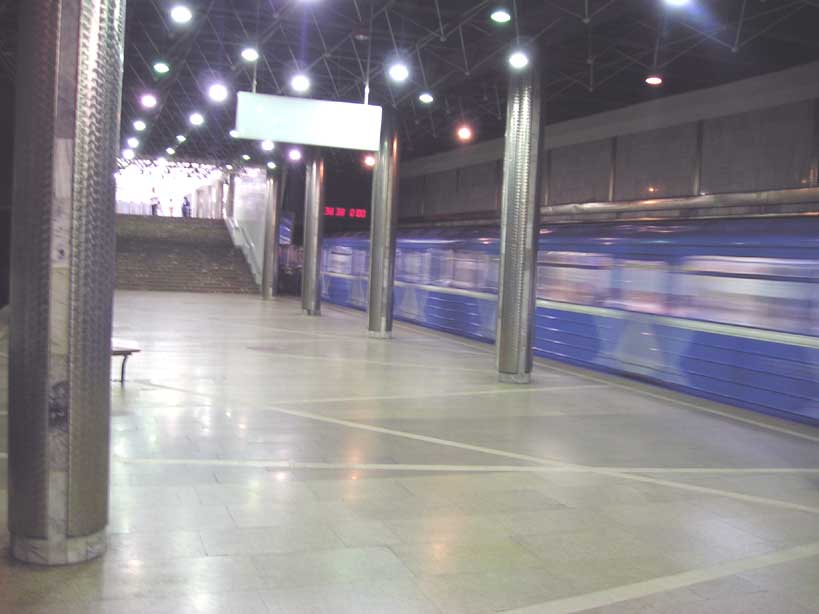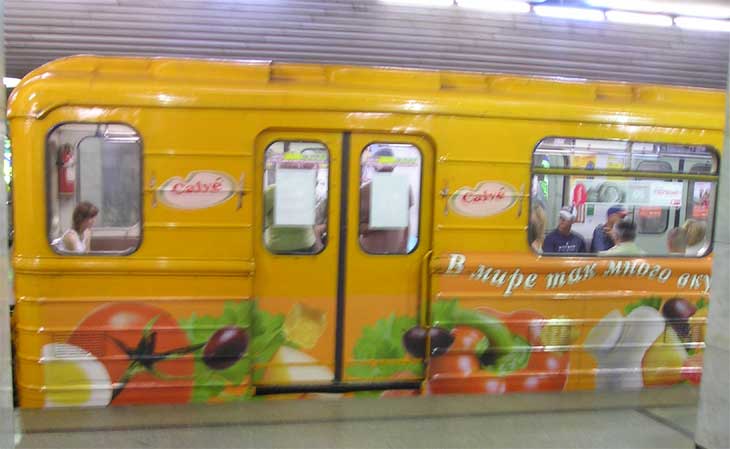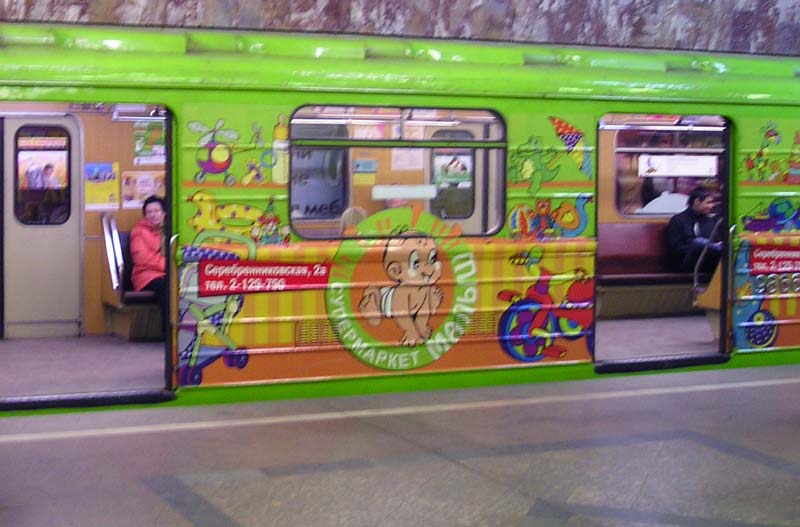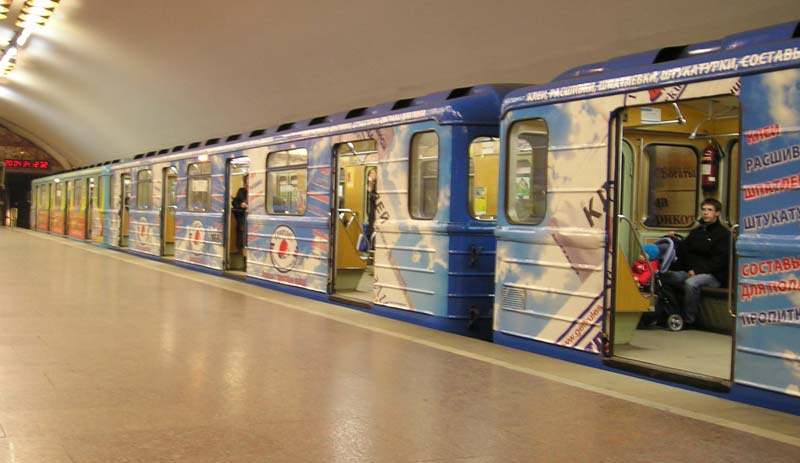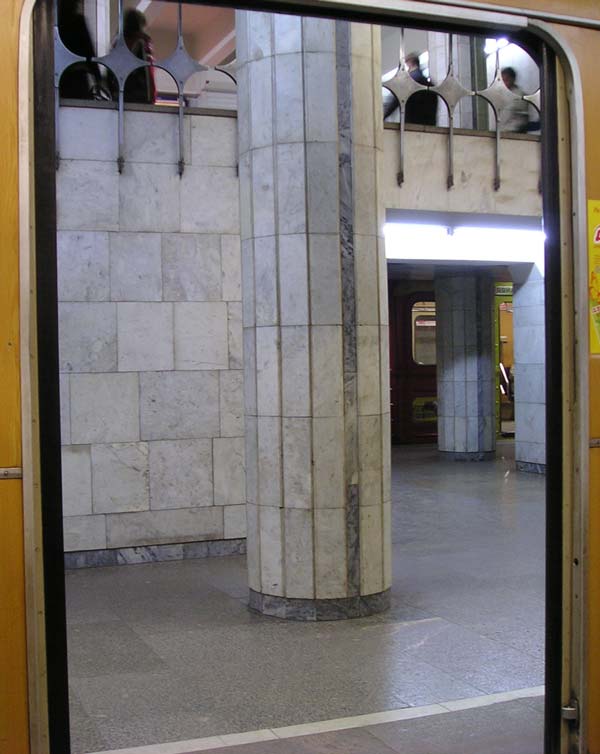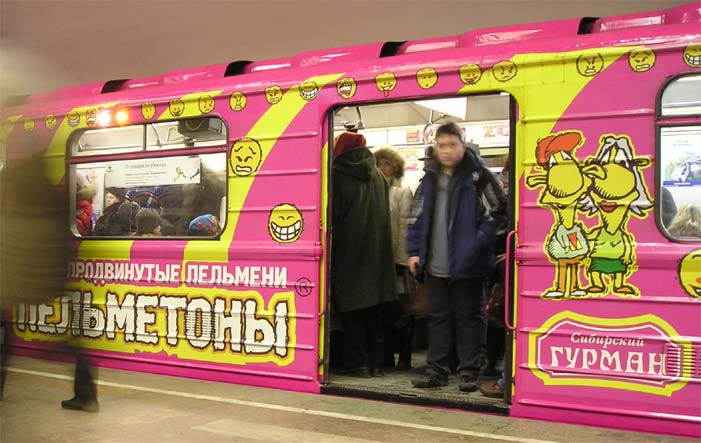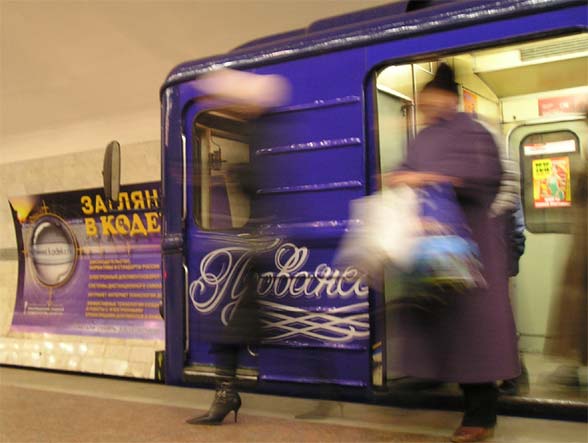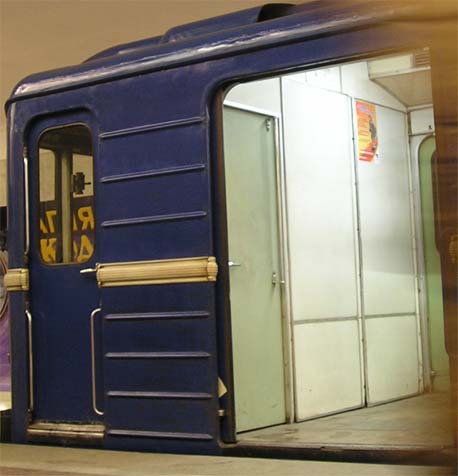
RUSSIA | Urban Transport Compilation
4 reading
1,041 - 1,060 of 4,220 Posts
Joined
·
9,306 Posts
NIZHNY NOVGOROD - BOR
On December 21, 2007 French company "Pomagalski S.A." ("Poma") presented a project of cableway between Nizhny Novgorod and industrial town Bor on the opposite bank of Volga River. The main purpose of this project is creation of alternative kind of transport across Volga River (in addition to river taxi, ferry, train and bus services). It's planned that energy consumption of the cableway will be in 5 times less than car transport. The length of planned cableway is 3658 meters (including 1336 meters over Volga River), height difference - 62 meters, travel time - about 12 minutes, number of supports - 10. In 2009 "Energomash" company (Belgorod) completed project work for the cableway and began to send constructions for supports in Nizhny Novgorod. The active construction was started in 2010.
Map of city (cableway 1-2):
![Image]()
ТКЛ
Nizhny Novgorod station (it will be located at the site with area 3000 square meters, the area of station itself - 1500 square meters):
![Image]()
yahooeu
![Image]()
yahooeu
![Image]()
yahooeu
![Image]()
yahooeu
![Image]()
yahooeu
![Image]()
yahooeu
![Image]()
yahooeu
![Image]()
yahooeu
![Image]()
"Красивые люди"
![Image]()
xanur1k
Bor station (it will be located at the site with area 4500 sq.m., the area of station itself - 1500 sq.m.):
![Image]()
yahooeu
![Image]()
yahooeu
![Image]()
yahooeu
![Image]()
yahooeu
![Image]()
yahooeu
![Image]()
yahooeu
![Image]()
"Красивые люди"
On December 21, 2007 French company "Pomagalski S.A." ("Poma") presented a project of cableway between Nizhny Novgorod and industrial town Bor on the opposite bank of Volga River. The main purpose of this project is creation of alternative kind of transport across Volga River (in addition to river taxi, ferry, train and bus services). It's planned that energy consumption of the cableway will be in 5 times less than car transport. The length of planned cableway is 3658 meters (including 1336 meters over Volga River), height difference - 62 meters, travel time - about 12 minutes, number of supports - 10. In 2009 "Energomash" company (Belgorod) completed project work for the cableway and began to send constructions for supports in Nizhny Novgorod. The active construction was started in 2010.
Map of city (cableway 1-2):

ТКЛ
Nizhny Novgorod station (it will be located at the site with area 3000 square meters, the area of station itself - 1500 square meters):

yahooeu

yahooeu

yahooeu

yahooeu

yahooeu

yahooeu

yahooeu

yahooeu

"Красивые люди"

xanur1k
Bor station (it will be located at the site with area 4500 sq.m., the area of station itself - 1500 sq.m.):

yahooeu

yahooeu

yahooeu

yahooeu

yahooeu

yahooeu

"Красивые люди"
Joined
·
9,306 Posts
February 28, 2011. Construction of support 7:
![Image]()
dimfoto
![Image]()
dimfoto
![Image]()
dimfoto
![Image]()
dimfoto
![Image]()
dimfoto
![Image]()
dimfoto
April 1, 2011:
![Image]()
dim1
![Image]()
dim1
April 24, 2011. Nizhny Novgorod station:
![Image]()
spider123
![Image]()
valery-lapin2011
![Image]()
valery-lapin2011
![Image]()
valery-lapin2011

dimfoto

dimfoto

dimfoto

dimfoto

dimfoto

dimfoto
April 1, 2011:

dim1

dim1
April 24, 2011. Nizhny Novgorod station:

spider123

valery-lapin2011

valery-lapin2011

valery-lapin2011
Joined
·
9,306 Posts
MOSCOW METRO
May 5, 2011. Construction of the own vestibule of station "Sretensky Boulevard", which planned to be open in the end of May 2011:
LUKOIL headquarters:
![Image]()
mosmetro
"Moscow Metropolitan. Stations "Turgenevskaya" and "Sretensky Boulevard"":
![Image]()
mosmetro
Project of the vestibule (architects - Nikolay Shumakov and Natalya Shurygina):
![Image]()
mosmetro
Vestibule of the station:
![Image]()
mosmetro
![Image]()
mosmetro
Installation of videocamera:
![Image]()
mosmetro
Turnstiles UT-2009:
![Image]()
mosmetro
Escalators:
![Image]()
mosmetro
Light fixtures:
![Image]()
mosmetro
![Image]()
mosmetro
![Image]()
mosmetro
![Image]()
mosmetro
Passageway to the platform of station:
![Image]()
mosmetro
May 5, 2011. Construction of the own vestibule of station "Sretensky Boulevard", which planned to be open in the end of May 2011:
LUKOIL headquarters:

mosmetro
"Moscow Metropolitan. Stations "Turgenevskaya" and "Sretensky Boulevard"":

mosmetro
Project of the vestibule (architects - Nikolay Shumakov and Natalya Shurygina):

mosmetro
Vestibule of the station:

mosmetro

mosmetro
Installation of videocamera:

mosmetro
Turnstiles UT-2009:

mosmetro
Escalators:

mosmetro
Light fixtures:

mosmetro

mosmetro

mosmetro

mosmetro
Passageway to the platform of station:

mosmetro
Joined
·
109 Posts
don't get angry) i didn't know that lol^^^^^^
Bravo! It caught me! :master::master::master::applause::applause::applause:
But I think this picture was to be loaded with at least one month ago.kay:
Joined
·
5,902 Posts
Children not allowed, right?
Queer. In addition to seeing all the prior photos here of various CIS cable car systems, will this new one feature secondary cables for safety?
Joined
·
9,306 Posts
What anger? What are you talking about? During first time I'm really thought that in Russia started to produce this "baby-tram". Later I saw that original post was created in April Fool's Day. Therefore, I'm applaud this idea, skill of the author and great Photoshop.don't get angry) i didn't know that lol
I'm just a little surprised, why did you decide to load this funny image in Victory Day, not April Fool's Day? Not everyone can understand this joke.
Children up to 13 years (for one-passanger chairlift); children up to 13 years without adults (for two-passanger chairlift).Children not allowed, right?
Russian cable car systems. This thread is about Russian Transport. Therefore, I don't wish to load here photos of cable car systems of other CIS states.Queer. In addition to seeing all the prior photos here of various CIS cable car systems...
I don't know....will this new one feature secondary cables for safety?
X - Kalanchyovsky Rail Terminal;Regarding the Moscow Aeroexpress plans: is it realistic at all to expect the new Moscow-City and rebuilt Kalanchyovsky Rail terminals to be actually in service until 2015? I have not seen a single actual rendering for those projects and considering the size (especially of the latter), I'd guess building works should begin soon.
Red arrow - Kalanchyovskaya (Fire Watchtower) street;
Green triangle - Komsomolskaya (Communist Union of Youth) Square:

vlad_svd

vlad_svd
X - Leningradsky Rail Terminal (built in 1844-1849 by Konstantin Thon and Rudolf Zhelyazevich; opened on November 1, 1851):

tyul-tatiana-vl
X - Yaroslavsky Rail Terminal (built in 1860-1862 by Roman Kuzmin; opened on August 18, 1862; rebuilt in 1902-1904 by Fyodor Schechtel):

Link
X - Kazansky Rail Terminal (built in 1862-1864 by Matvey Levestam; opened on July 20, 1862; rebuilt in 1913-1940 by Alexey Shchusev):

tyul-tatiana-vl
X - Vestibule of Metro station "Komsomolskaya" (built in early 1950s by Alexey Shchusev, V. Varvarin and O. Velikoretsky; opened on January 30, 1952):

Wikipedia
X - Hotel "Leningradskaya-Hilton" (built in 1949-1954 by Leonid Polyakov and Alexander Boretsky):

LarisaCh
Joined
·
5,902 Posts
I apologise. I confused matters by presuming various ones of the above-lodged cable-car photos as must be hailing from around the CIS.I don't wish to load here photos of cable car systems of other CIS states.
Joined
·
9,306 Posts
RUSSIAN METRO SYSTEMS BY ANNUAL PASSENGER RIDES
As it was expected, in 2010 passenger traffic of Russian Metro systems (except Moscow and Kazan) slightly increased in comparison with the "crisis" year (2009), but has not reached the level of 2008.
1. MOSCOW - 2348.3 mln. passangers (-1.8% from 2009; -8.7% from 2008)
2005 - 2603.2 mln.
2006 - 2475.6 mln.
2007 - 2528.7 mln.
2008 - 2572.9 mln.
2009 - 2392.2 mln.
2010 - 2348.3 mln.
2. SAINT PETERSBURG - 779.2 mln. passangers (+3.4% from 2009; -6.8% from 2008)
2005 - 820.0 mln.
2006 - 828.2 mln.
2007 - 829.8 mln.
2008 - 835.8 mln.
2009 - 753.5 mln.
2010 - 779.2 mln.
3. NOVOSIBIRSK - 73.9 mln. passangers (+5.6% from 2009; -4.6% from 2008)
2005 - 61.8 mln.
+ ONE NEW STATION! *
2006 - 66.9 mln.
2007 - 69.6 mln.
2008 - 77.5 mln.
2009 - 70.0 mln.
2010 - 73.9 mln.
4. YEKATERINBURG - 37.6 mln. passangers (+0.8% from 2009; -23.1% from 2008)
2005 - 43.6 mln.
2006 - 45.0 mln.
2007 - 46.4 mln.
2008 - 48.9 mln.
2009 - 37.3 mln.
2010 - 37.6 mln.
5. NIZHNY NOVGOROD - 27.0 mln. passangers (+0.4% from 2009; -16.4% from 2008)
2005 - 32.5 mln.
2006 - 33.3 mln.
2007 - 32.6 mln.
2008 - 32.3 mln.
2009 - 26.9 mln.
2010 - 27.0 mln.
6. SAMARA - 17.5 mln. passangers (+4.8% from 2009; -6.9% from 2008)
2005 - 10.8 mln.
2006 - 11.4 mln.
2007 - 12.0 mln.
+ ONE NEW STATION! *
2008 - 18.8 mln.
2009 - 16.7 mln.
2010 - 17.5 mln.
7. KAZAN - 12.0 mln. passangers (+21.2% from 2009; +55.8% from 2008)
2005 - 2.2 mln.
2006 - 5.3 mln.
2007 - 6.9 mln.
2008 - 7.7 mln.
+ ONE NEW STATION! *
2009 - 9.9 mln.
2010 - 12.0 mln.
* It shows the dependence of annual passanger traffic from the opening of new stations (only for regional cities with a small number of stations).
As it was expected, in 2010 passenger traffic of Russian Metro systems (except Moscow and Kazan) slightly increased in comparison with the "crisis" year (2009), but has not reached the level of 2008.
1. MOSCOW - 2348.3 mln. passangers (-1.8% from 2009; -8.7% from 2008)
2005 - 2603.2 mln.
2006 - 2475.6 mln.
2007 - 2528.7 mln.
2008 - 2572.9 mln.
2009 - 2392.2 mln.
2010 - 2348.3 mln.
2. SAINT PETERSBURG - 779.2 mln. passangers (+3.4% from 2009; -6.8% from 2008)
2005 - 820.0 mln.
2006 - 828.2 mln.
2007 - 829.8 mln.
2008 - 835.8 mln.
2009 - 753.5 mln.
2010 - 779.2 mln.
3. NOVOSIBIRSK - 73.9 mln. passangers (+5.6% from 2009; -4.6% from 2008)
2005 - 61.8 mln.
+ ONE NEW STATION! *
2006 - 66.9 mln.
2007 - 69.6 mln.
2008 - 77.5 mln.
2009 - 70.0 mln.
2010 - 73.9 mln.
4. YEKATERINBURG - 37.6 mln. passangers (+0.8% from 2009; -23.1% from 2008)
2005 - 43.6 mln.
2006 - 45.0 mln.
2007 - 46.4 mln.
2008 - 48.9 mln.
2009 - 37.3 mln.
2010 - 37.6 mln.
5. NIZHNY NOVGOROD - 27.0 mln. passangers (+0.4% from 2009; -16.4% from 2008)
2005 - 32.5 mln.
2006 - 33.3 mln.
2007 - 32.6 mln.
2008 - 32.3 mln.
2009 - 26.9 mln.
2010 - 27.0 mln.
6. SAMARA - 17.5 mln. passangers (+4.8% from 2009; -6.9% from 2008)
2005 - 10.8 mln.
2006 - 11.4 mln.
2007 - 12.0 mln.
+ ONE NEW STATION! *
2008 - 18.8 mln.
2009 - 16.7 mln.
2010 - 17.5 mln.
7. KAZAN - 12.0 mln. passangers (+21.2% from 2009; +55.8% from 2008)
2005 - 2.2 mln.
2006 - 5.3 mln.
2007 - 6.9 mln.
2008 - 7.7 mln.
+ ONE NEW STATION! *
2009 - 9.9 mln.
2010 - 12.0 mln.
* It shows the dependence of annual passanger traffic from the opening of new stations (only for regional cities with a small number of stations).
Joined
·
9,306 Posts
NEWS FROM THE MOSCOW METRO CONSTRUCTION SITES
"BORISOVO" (planned to be open in 2011):
![Image]()
Егор64
![Image]()
METROMAN525
![Image]()
METROMAN525
![Image]()
METROMAN525
"BORISOVO" (planned to be open in 2011):

Егор64

METROMAN525

METROMAN525

METROMAN525
Joined
·
9,306 Posts
"SHIPILOVSKAYA" (2011)
Southern vestibule:
![Image]()
Шипиловский
![Image]()
Шипиловский
![Image]()
Шипиловский
![Image]()
Шипиловский
Northern vestibule:
![Image]()
Вася Зябликов
Southern vestibule:

Шипиловский

Шипиловский

Шипиловский

Шипиловский
Northern vestibule:

Вася Зябликов
Joined
·
9,306 Posts
Joined
·
3,321 Posts
These data show that only Moscow and Saint Petersburg metros are doing a serious job. The other Russian cities have their metros only for decoration purposes.RUSSIAN METRO SYSTEMS BY ANNUAL PASSENGER RIDES
Joined
·
792 Posts
Novosibirsk, the biggest metro system after Moscow and S.Pb, have only 13 station in contrast to 64 of Saint Petersburg and 182 of Moscow. The other Russian cities can't do a "serious job" before further expanding of underground which may last forever with current rate of financing.The other Russian cities have their metros only for decoration purposes.
In last-soviet period (1980-90-years) large town (more 1 000 000 populations) begin consruction metro. But in 90-years XX centure is strong economic crisis. So, little metros only for decoration purpose: low financial capacity of cities.These data show that only Moscow and Saint Petersburg metros are doing a serious job. The other Russian cities have their metros only for decoration purposes.
For example, Novosibirsk is large town in Siberia. One station is building five years.
Joined
·
9,306 Posts
Novosibirsk, the biggest metro system after Moscow and S.Pb, have only 13 station in contrast to 64 of Saint Petersburg and 182 of Moscow. The other Russian cities can't do a "serious job" before further expanding of underground which may last forever with current rate of financing.
I'm agree with both posts. Also don't need to forget that the population of Moscow is 11.51 mln. people, the population of St. Petersburg - 4.87 mln, while the population of other Russian Metro cities is varies from 1.14 mln. (Kazan) to 1.47 mln. people (Novosibirsk). Accordingly, it's simply impossible to have the same passanger traffic as in Moscow or St. Petersburg.In last-soviet period (1980-90-years) large town (more 1 000 000 populations) begin consruction metro. But in 90-years XX centure is strong economic crisis. So, little metros only for decoration purpose: low financial capacity of cities.
For example, Novosibirsk is large town in Siberia. One station is building five years.
The second factor is the unfortunate choice of route (it's actual for Metros in Nizhny Novgorod and Samara). It was relevant in 1980s, as it was projected to transport workers in industrial areas. However, after the Soviet collapse, many industrial enterprises were closed down due to financial problems and others have sharply reduced the number of staff. For example, if during Soviet years the staff of the GAZ plant in Nizhny Novgorod (it's remain one of the largest companies in the Russian automotive industry) was 120.000 people, that now this number decreased to 27.000. The reduction of workers at the plants and factories has led to a decrease of passanger traffic in Metros. The new Metro lines were not built in 1990s for the same reason - cuts in funding.
In any case, Metro is a necessary kind of transport in all seven Metro cities and the opening of new stations in five cities will lead to an increase in passenger traffic. For example, Kazan authorities planning to build two new lines, and they received financial support for this project. In Yekaterinburg two new stations will open this year. In Nizhny Novgorod, next year finally will open the first station on the other bank of the Oka River. This will lead to a long-awaited connection of the two parts of city via Metro bridge and to fast and comfortable transportation from one bank to another. Unfortunately, the prospects for two other cities (Novosibirsk and Samara) in the near future are not so optimistic.
1,041 - 1,060 of 4,220 Posts
-
?
-
?
-
?
-
?
-
?
-
?
-
?
-
?
-
?
-
?
-
?
-
?
-
?
-
?
-
?
-
?
-
?
-
?
-
?
-
?
- posts
- 146M
- members
- 1.1M
- Since
- 2002
A truly global community dedicated to skyscrapers, cities, urban development, and the metropolitan environment. Join us to share news, views and fun about architecture, construction, transport, skylines, and much more!
Top Contributors this Month
View All
christos-greece
2.7K Replies
Srdjan Adamovic
1.8K Replies
kunming tiger
1.5K Replies
















